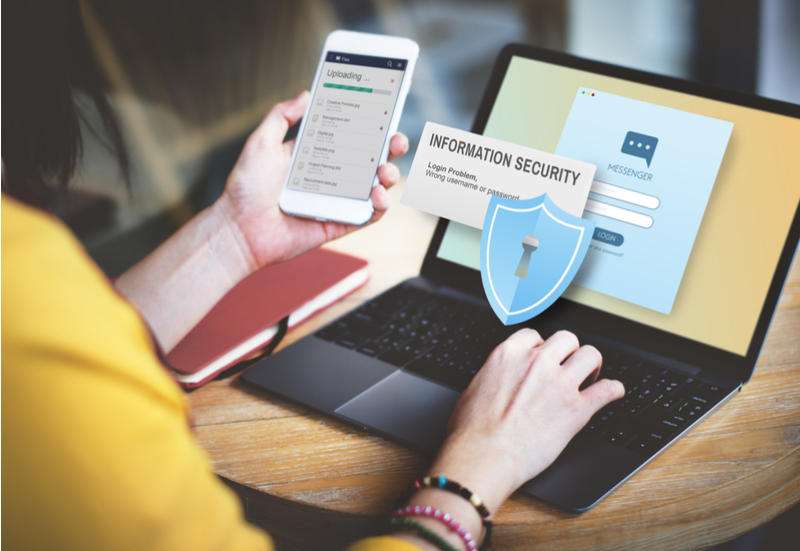
Sensitive data on the network is a crucial asset for any enterprise and securing it has become a never-ending war for them. It is required to address a security breach in the network as soon as possible but its prevention from future attacks is rather more important. SIEM brings together a system to gather event logs from all the devices on a network to give you a big picture of what is happening inside it. It provides effective analytical, monitoring and reporting tools that can be used to increase the efficiency of the current security infrastructure of a company. Additionally, with the ever-increasing compliance regulations which have placed more stress on detecting and reporting breaches, a SIEM system is an indispensable part in the organization.
What is SIEM?
Security information and event management (SIEM) is a system that enables real-time security monitoring, identifying and recording data breaches. It helps in a detailed analysis of cyber security events to detect vulnerabilities in the network. From the low-level real-time detection of threats and malicious activities to automating compliance regulations, it provides a comprehensive and centralized view of the security scenario of an IT infrastructure. SIEM products and services combine security information management (SIM) and security event management (SEM).
Security information management (SIM): Provides analysis, documentation and long-term storage of security logs generated by a SIEM system.
Security event management (SEM): Deals with real-time monitoring, vulnerability assessments and correlating security events.
How SIEM helps in compliance regulations?
Compliance regulations prevent user’s personal and banking information from being stolen and misused. For example, Payment Card Industry Data Security Standard (PCI DSS) sets security standards for companies that store and process credit card payments. Every company has to document and report all the security events to the regulating authority in order to comply with it.
With a large number of devices distributed over a wide area network (WAN), generating compliance reports from each, is a tedious task. SIEM tools have built-in support for most common compliance regulation operations. Its 24*7 monitoring service quickly detects violations and disruptions in critical hardware and software components. It provides automated solutions for gathering the compliance data and documenting reports that adapt to existing security infrastructure and auditing assets of an organization.
Choosing the right SIEM system:
SIEM is a key component for improving the data security infrastructure of an organization. It is implemented as a software, as an appliance or as a managed service. Accounting the functionalities, each vendor has a different solution for SIEM system implementation. The following parameters will help you in determining the right SIEM system for your organization-
- Number of licenses: Determine the number of applications and devices needed to be scrutinized.
- Scalability: The SIEM system should allow easy addition and removal of assets.
- Cost efficiency: Ensures that the system falls under your security budget to get the best return on investment.
- Forensic capabilities: Determines whether you require a low-level analysis of security breaches or not. Then, deciding the right vendor that offers forensic capabilities in its SIEM system.
- Threat intelligence: Determine whether your SIEM system has the ability to integrate with internal/external devices to identify threats and correlate them quickly in real time.
There are many security factors that need to be addressed by a SIEM system and with the frequently changing compliance regulations, maintaining one can become complex over time. A SIEM service provider can provide you with resources, knowledge, and capabilities you need to develop a secure and robust IT infrastructure for your organization.
Using SIEM beyond compliances:
SIEM systems are designed for finding patterns in cyber-attacks to prevent IT assets of an organization. But, a typical enterprise sees SIEM only as a tool for generating compliance and regulatory reports. It is also an effective siem security assessment tool and not just a compliance regulation tool. Therefore, an organization needs to actively work on identifying vulnerabilities and analyzing breaches to prevent future attacks and the cost associated with recovery from data losses. To support this fact, we have compiled various other capabilities of SIEM systems-:
- Data collection and storage of security information from multiple sources
- Event detection and immediate notification
- Data aggregation and correlation to turn it into a meaningful information for analyzing vulnerabilities
- Machine-learning and cognitive techniques for anomaly detection
- Data enrichment and contextualization
- Audit data management
- Security reporting and visualization
Conclusion
With the increasing number of cyber-attacks, devising a contingency plan has become more sophisticated. As more data is produced from various sources, processing and analyzing the security events has posed to be a new challenge for organizations. SIEM systems can strengthen their incident response and security assessment capabilities. It provides protection, detection and a response solution to security events. From protecting data against sophisticated threats to managing compliance in complex regulatory environments, SIEM systems are one click solution for security management.
Contact us today to learn about Bleuwire™ services and solutions in how we can help your business.





